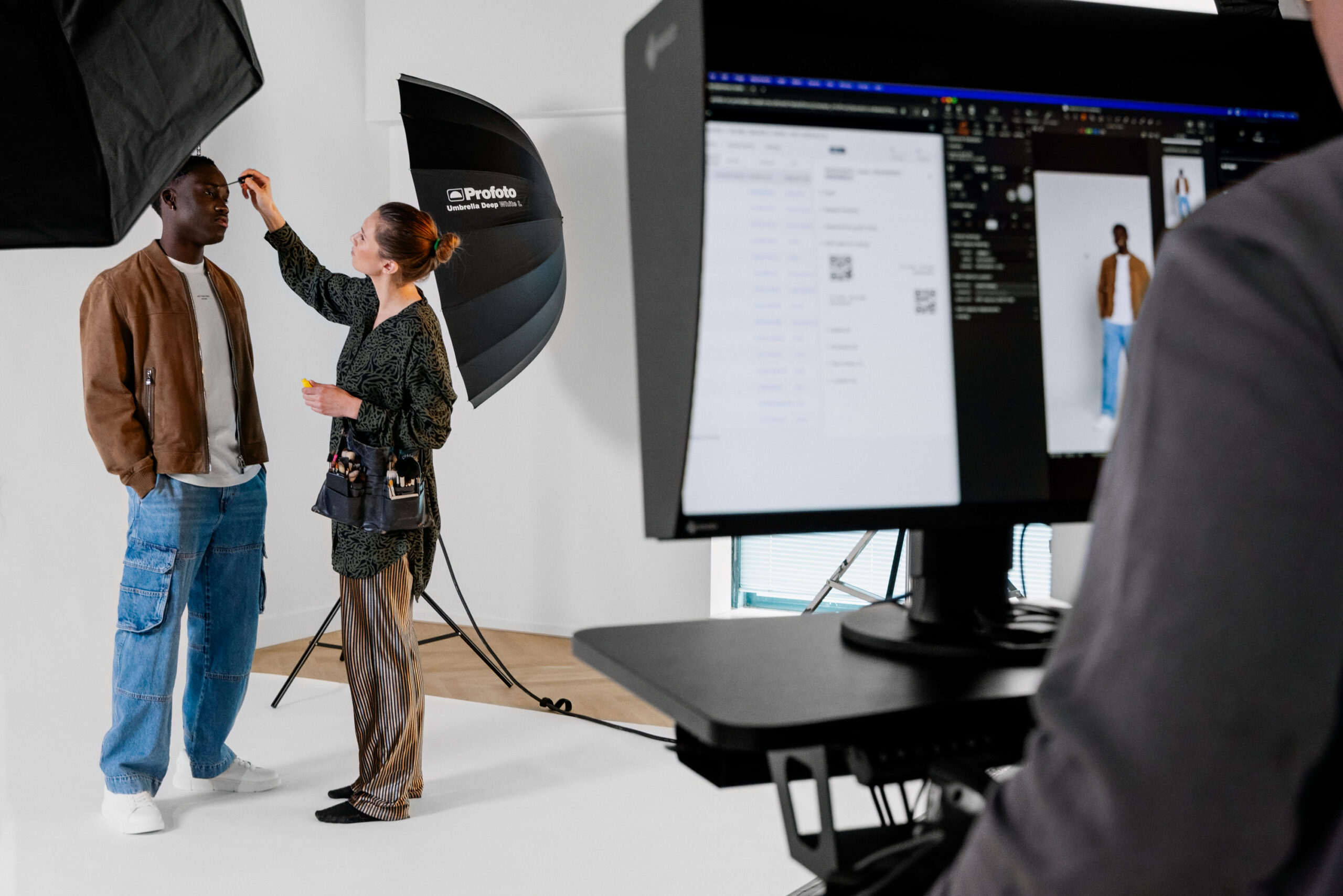In the digital shopping realm, particularly in fashion e-commerce, providing comprehensive product information is crucial to empowering customers to make informed purchasing decisions. Given the high return rates associated with online clothing purchases—often due to sizing issues—incorporating detailed size and fit information becomes paramount. A strategic approach to mitigating this challenge involves integrating model information directly into the photography process.
Integrating model information
Photo studios, at the intersection of product and presentation, are uniquely positioned to enrich images with valuable information. By detailing the model’s size alongside the garment size, studios can offer shoppers a clearer understanding of how a piece of clothing might fit their own body. This information, directly related to the image rather than the product, becomes an essential asset on the e-commerce platform, potentially reducing the frequency of returns due to sizing errors.
Leveraging image metadata for enhanced information
The capability of images to carry metadata provides a seamless avenue for embedding this crucial information. Utilizing standards such as Adobe XMP can expand the scope of data attached to images, from model dimensions to image rights and validity periods. While many Digital Asset Management (DAM) and Product Information Management (PIM) systems can extract this metadata, the initial attachment process often presents a logistical challenge, typically requiring manual input which can be both time-consuming and prone to errors.
Streamlining with support systems
The introduction of a supportive system can transform this labor-intensive process into a streamlined, potentially automated workflow. With the right tools, information available at the outset of the photo shoot—such as garment sizes and model details—can be directly saved to the image files. This not only adds significant value to the business by enriching the customer experience but also alleviates additional workload on the studio team. As images move through various systems and applications, the embedded information can be readily accessed and utilized, further enhancing the e-commerce ecosystem.
Implementing such a system not only signifies a leap towards operational efficiency but also underscores a commitment to enhancing customer satisfaction. By minimizing the guesswork involved in online shopping, studios can play a pivotal role in reducing return rates and fostering a more engaging and reliable shopping experience.


